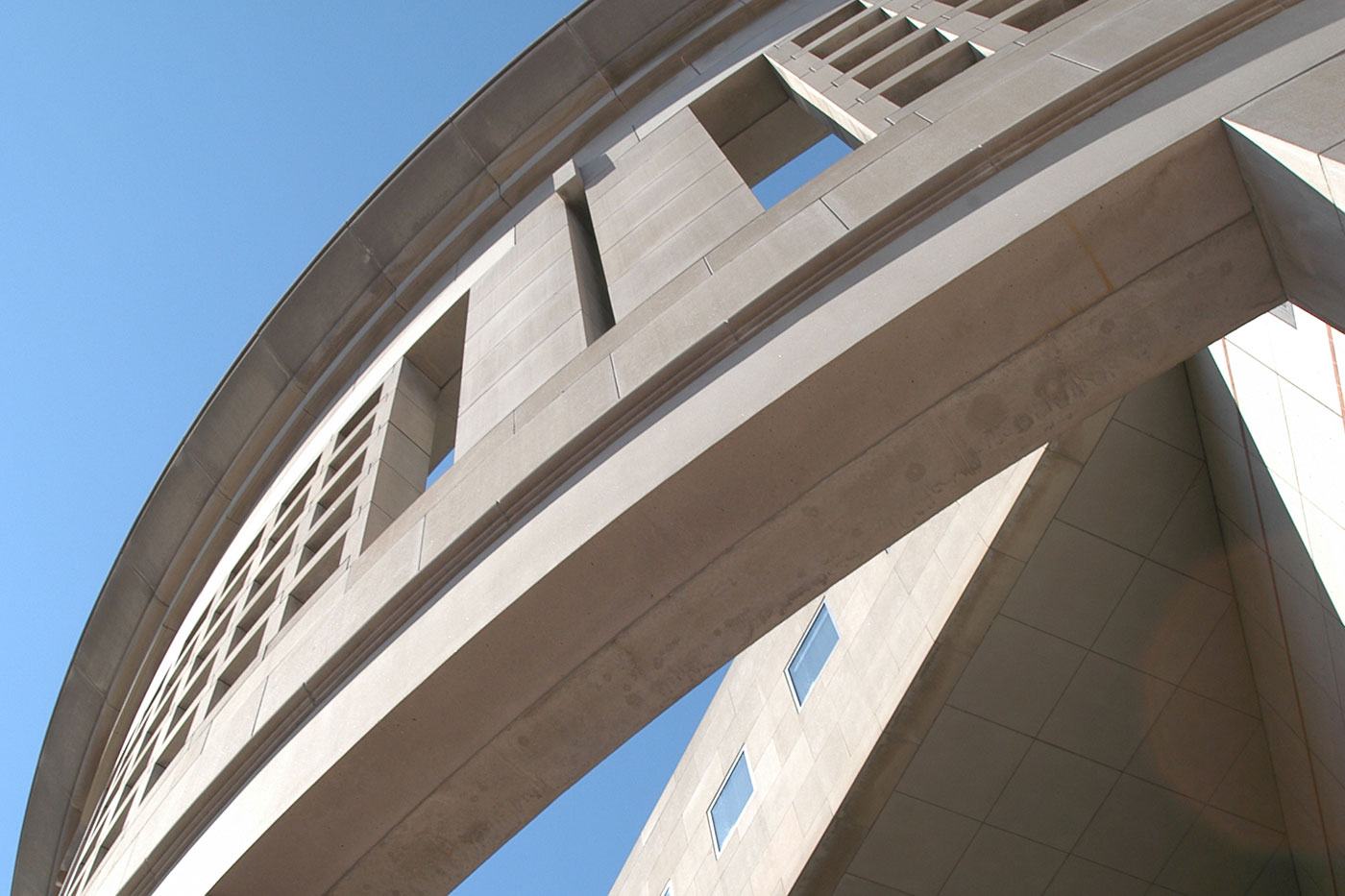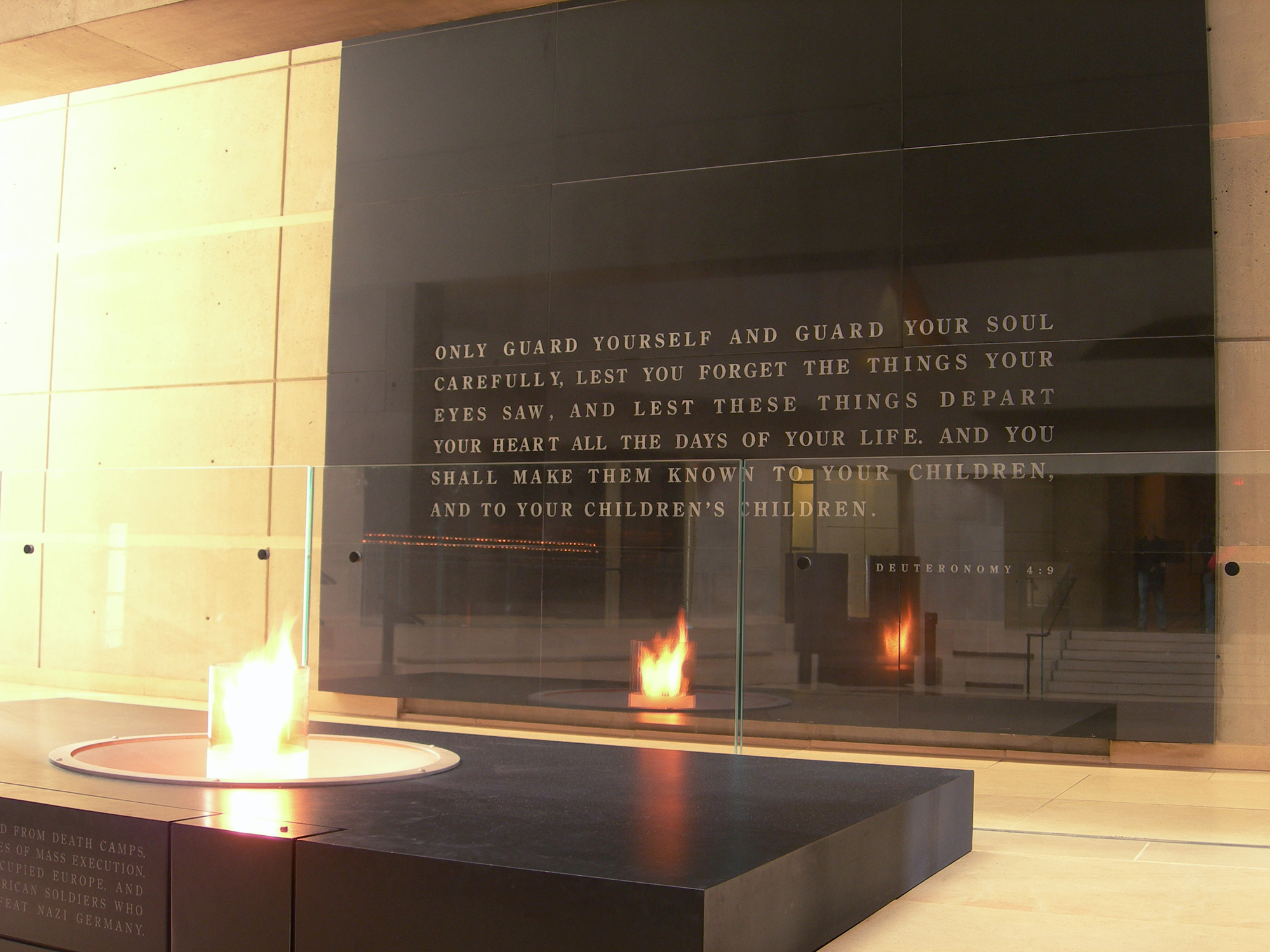At first glance, the Museum’s exterior seems benign. On three sides—east, south, and west—it is enveloped in limestone, the most common building material in official Washington. A large portal fronts the 14th Street entrance to the east, bowing gracefully outward to assume a formal presence in the urban landscape beyond. On the building’s north side, pyramid-shaped roofs top four red-brick towers.
To the west, along Raoul Wallenberg Place—named after the Swedish diplomat who rescued thousands of Hungarian Jews—the semidetached, six-sided Hall of Remembrance stands as a stately companion to the nearby Washington Monument and Jefferson Memorial. The Museum’s limestone and brick exterior engages the neoclassical Bureau of Engraving and Printing to the south and the Victorian red-brick Sydney R. Yates Building to the north.
Concealment and Duality
But all is not quite as it seems. Everywhere the building contains elements of concealment, deception, disengagement, and duality.
The curved portico of the 14th Street entrance—with its squared arches, window grating, and cubed lights—is a mere facade, a fake screen that actually opens to the sky, deliberately hiding the disturbing architecture of skewed lines and hard surfaces of the real entrance that lies behind it. In Freed’s words, “Visitors must pass through the limestone partition to enter a concrete world.”
Along the north brick walls, a different perspective reveals a roofline profile of camp guard towers, a procession of sentry boxes. Above the western entrance, a limestone mantle holds a solitary window containing 16 solid “panes,” framed by clear glass, reversing the normal order and obscuring the ability to look in or out.
The Hall of Remembrance seems almost separated from the main building. Its six commanding walls, joined by open corners, appear as freestanding tablets. What look like windows are, instead, blocked-over blind recesses. The combined effect hints at the troubling messages found inside the Museum.







